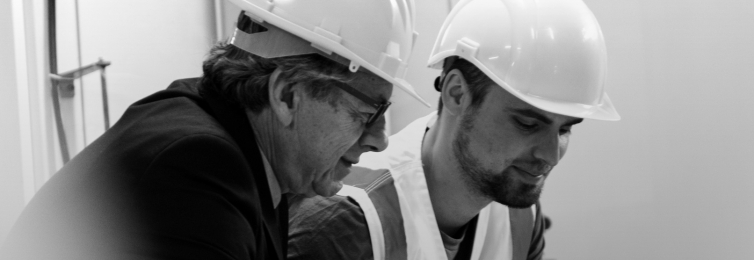All of us can look back through our lives and identify a teacher, coach, or boss who made a positive impact on us—strong leaders who mentored and inspired. As a leader on the construction job-site, you have an opportunity to take on your role with confidence and guide your team toward maintaining a safe and satisfying workplace.
Andrew Baird, ARM, CRM, CBIA, senior risk technical consultant at Builders Mutual, provides leadership training for supervisors, crew leaders, GCs, and business owners around the country. Here, in this two-part Q&A format, Andrew shares the attributes and actions necessary for being a great leader on the job-site.
What’s the role of a good leader?
The role of an influential leader is really very simple: Lead by example, stay positive, communicate openly, put the team first, and treat everyone with respect and fairness.
What’s the difference between leadership and management/supervision?
This is a big issue in today’s workplace. With the growth of big data and analytics, employees are being managed more and more as numbers while leadership takes a back seat. Management is more about telling employees what needs to be done and seeing that it’s done right. Leadership, on the other hand, puts people before numbers, ensuring the team is properly supported for success. The bottom line? Management controls; leadership supports.
How can you move from focusing on job completion toward leading for improved performance?
First, stop trying to catch people doing things wrong, and start recognizing what they’re doing right. What gets recognized gets repeated. Think about the last time someone told you that you did a good job. How did that feel? Did you want to repeat the action? Next, stop blaming workers for not following rules. Instead, find out why the rules are being broken. Then, get feedback from them on what needs to change. When we start focusing on how to make the workers’ jobs easier, we’ll start to improve performance and safety, and we’ll reduce turnover in the process.
Why is solid leadership important on a job-site?
Leadership can make or break a job in terms of production, quality, and safety. It’s vital to remember that a leader’s actions speak louder than his words. So, if a leader doesn’t demonstrate a concern for quality, then that will be reflected by the crew. Workers may cut corners on items that are easy to cover up, require too much time, or seem difficult to accomplish. Moreover, if a leader’s actions do not demonstrate a commitment to safety, then his or her workers will most likely take more risks, which will lead to more accidents and injuries.
When a leader supports his or her crew, the crew members will support their leader. The leader’s attitude and approach can either create an atmosphere of every man for himself or a culture of cooperation and watching out for each other. If workers don’t trust or respect their leader, they’ll disregard direction and input given, potentially endangering one of the other team members and negatively impacting the project.
Why is creating and maintaining a culture of safety important?
A culture is nothing more than a collective agreement on why we do what we do and the way we do it. In other words, the culture creates the patterns and habits of the organization. Team—and individual—habits are very powerful and can lead to success or failure. They’re also very hard to break once established. It’s important that leaders establish job-site habits that foster good communication, respect, care, creativity, and pride in one’s work. These positive patterns support a safe and efficient work environment, enabling the most positive and desired outcomes.
How does leadership affect safety on the job-site?
Establishing a culture of safety goes back to the concept merely ensuring a job gets done versus leading your people. The former only creates fear, anxiety, and a game of cat and mouse. But leadership demonstrates a positive safety attitude, respect, and mutual concern. Good leaders support their workers and help find ways to make safety easier through open dialog, creativity, and cooperation. Ultimately, people want to do a good job. And if they are properly supported by a leader, they will be empowered to do good work.
Leadership makes a difference. So, apply this guidance and see how your job-site changes for the better. Get started by improving the safety culture on your job-site!




 Find an
Find an